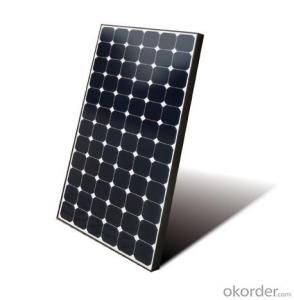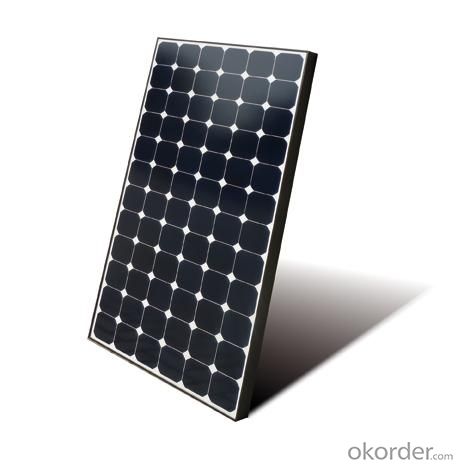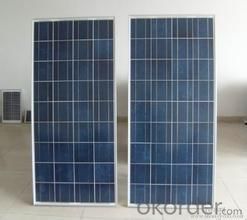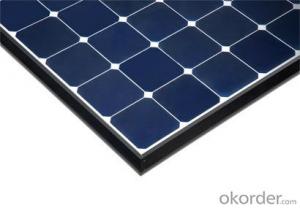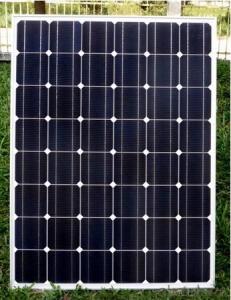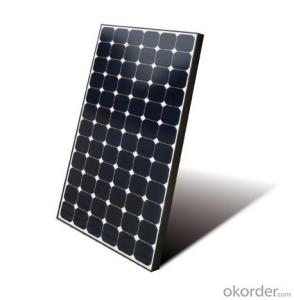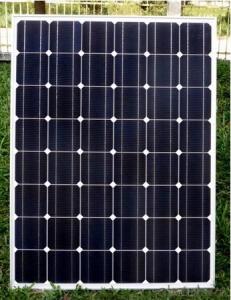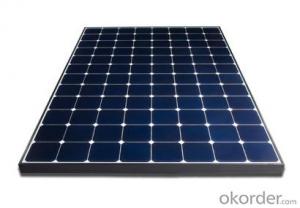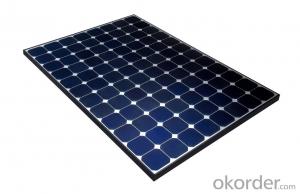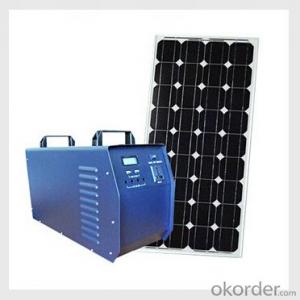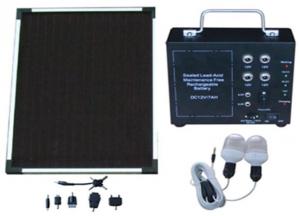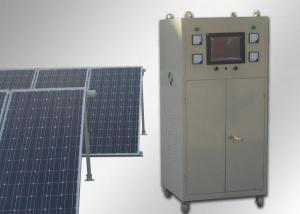Solar Energy Systems Utah - CNBM On Grid System 600W with Certificate UL TUV CE
- Loading Port:
- Shanghai
- Payment Terms:
- TT OR LC
- Min Order Qty:
- 100 watt
- Supply Capability:
- 1000 watt/month
OKorder Service Pledge
OKorder Financial Service
You Might Also Like
Specification
CNBM On Grid System 600W with Certificate UL TUV CE
Product description
A grid-connected photovoltaic power system, or grid-connected PV system is anelectricity generating solar PV system that is connected to the utility grid. A grid-connected PV system consists of solar panels, one or several inverters, a power conditioning unit and grid connection equipment. They range from small residential and commercial rooftop systems to large utility-scale solar power stations. Unlike stand-alone power systems, a grid-connected system rarely includes an integrated battery solution, as they are still very expensive. When conditions are right, the grid-connected PV system supplies the excess power, beyond consumption by the connected load, to the utility grid.
Connection of the photovoltaic power system can be done only through an interconnection agreement between the consumer and the utility company. The agreement details the various safety standards to be followed during the connection.[4]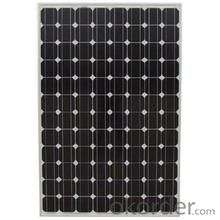
Application
Industrial
Commercial
Residential
Feature
Residential, grid-connected rooftop systems which have a capacity more than 10 kilowatts can meet the load of most consumers.[2] They can feed excess power to the grid where it is consumed by other users. The feedback is done through a meter to monitor power transferred. Photovoltaic wattage may be less than average consumption, in which case the consumer will continue to purchase grid energy, but a lesser amount than previously. If photovoltaic wattage substantially exceeds average consumption, the energy produced by the panels will be much in excess of the demand. In this case, the excess power can yield revenue by selling it to the grid. Depending on their agreement with their local grid energy company, the consumer only needs to pay the cost of electricity consumed less the value of electricity generated. This will be a negative number if more electricity is generated than consumed.[3] Additionally, in some cases, cash incentives are paid from the grid operator to the consumer.
Packaging
With carton and box
- Q: Can solar energy systems be used for heating and cooling?
- Yes, solar energy systems can be used for heating and cooling. Solar thermal systems can capture and harness the sun's heat to provide hot water or space heating, while solar-powered air conditioning systems use solar energy to cool indoor spaces.
- Q: How do solar energy systems impact electricity bills?
- Solar energy systems can significantly reduce electricity bills by generating free, clean energy from the sun. By harnessing solar power, homeowners and businesses can offset a portion or even the entirety of their electricity usage, leading to substantial savings on their monthly bills. Additionally, excess electricity generated by solar panels can be fed back into the grid, resulting in further financial benefits through net metering or feed-in tariffs.
- Q: Can solar energy systems be used for powering financial institutions or banks?
- Yes, solar energy systems can definitely be used for powering financial institutions or banks. In fact, many financial institutions and banks have already started adopting solar energy as a way to power their operations. Solar energy systems provide a reliable and clean source of electricity, reducing their dependence on traditional fossil fuels and lowering their carbon footprint. Financial institutions and banks typically have large buildings with high energy consumption due to the various electronic devices, lighting, and HVAC systems required to run their operations. By installing solar panels on their rooftops or in nearby areas, these institutions can generate a significant amount of electricity to meet their energy needs. Solar energy systems can also help financial institutions and banks reduce their energy costs in the long run. While the initial investment may be higher compared to conventional energy sources, the savings from reduced electricity bills over time can offset the initial expenses. This can result in significant financial benefits for these institutions, contributing to their overall sustainability and profitability. Moreover, utilizing solar energy can also enhance the reputation of financial institutions and banks, as they showcase their commitment to environmental sustainability and renewable energy. This can attract environmentally conscious customers and investors who value businesses that prioritize green practices. Additionally, solar energy systems can provide a reliable power supply to financial institutions and banks, ensuring uninterrupted operations even during power outages or grid failures. This is especially crucial for institutions that deal with sensitive financial transactions and require a continuous power supply to maintain data security and operational stability. In summary, solar energy systems can be effectively used to power financial institutions and banks, offering a sustainable and cost-effective solution to meet their energy needs. By adopting solar energy, these institutions can reduce their environmental impact, lower energy costs, enhance their reputation, and ensure reliable operations.
- Q: Do solar energy systems require a battery for storage?
- No, solar energy systems do not necessarily require a battery for storage. While batteries can be used to store excess solar energy for later use, it is not a mandatory component of a solar energy system.
- Q: Can solar energy systems be used for powering hospitals or healthcare facilities?
- Yes, solar energy systems can be used to power hospitals and healthcare facilities. Solar panels can generate electricity to meet the energy needs of these facilities, reducing their dependence on conventional sources and potentially lowering operational costs. This clean and renewable energy source can provide a reliable and sustainable power supply, making it an ideal choice for healthcare institutions aiming to reduce their carbon footprint and ensure uninterrupted access to electricity.
- Q: Can solar energy systems be used in powering beauty salons or spas?
- Yes, solar energy systems can definitely be used to power beauty salons or spas. Solar energy is a renewable and sustainable source of power that can help reduce the dependence on grid electricity and minimize the carbon footprint of these establishments. By installing solar panels on the roof or other suitable areas, beauty salons and spas can generate their own electricity and reduce their energy costs in the long run. Beauty salons and spas typically require a significant amount of electricity to operate hair dryers, hair straighteners, curling irons, lighting, air conditioning, and other equipment. Solar energy systems can easily meet these power demands, especially during daylight hours when the sun is shining. Excess electricity generated during the day can be stored in batteries or fed back into the grid, ensuring a continuous supply of power at all times. Moreover, solar energy systems can help improve the sustainability and environmental performance of beauty salons and spas. By switching to solar power, these establishments can significantly reduce their carbon emissions and contribute to the fight against climate change. Additionally, using solar energy can help attract environmentally conscious customers who appreciate businesses that prioritize sustainability. In summary, solar energy systems are a viable option for powering beauty salons and spas. They can provide a reliable and sustainable source of electricity, reduce energy costs, and contribute to a greener and more environmentally friendly business operation.
- Q: Can solar energy systems be used in conjunction with energy storage systems?
- Yes, solar energy systems can be effectively used in conjunction with energy storage systems. Solar energy systems generate electricity during daylight hours, and any excess energy generated can be stored in energy storage systems such as batteries. These batteries can then be used to power homes or businesses during periods when solar energy generation is limited, such as at night or during cloudy weather. This combination of solar energy systems and energy storage systems allows for a more consistent and reliable supply of electricity, reducing dependence on the grid and promoting greater sustainability.
- Q: Are solar panels maintenance-free?
- While solar panels do require less maintenance compared to other energy systems, they are not entirely maintenance-free. Solar panels are designed to be durable and to withstand various weather conditions, but they still need occasional cleaning and inspection to ensure optimal performance. Dust, dirt, and debris can accumulate on the panels over time, reducing their efficiency. Therefore, it is recommended to clean the panels periodically to maintain their effectiveness. Additionally, regular inspections can help identify any issues or damages that may affect their functioning. While solar panels have a long lifespan and require minimal maintenance, it is important to provide basic care to ensure they continue to generate clean and efficient energy for years to come.
- Q: How long does a solar energy system last?
- A solar energy system typically lasts for around 25 to 30 years.
- Q: How do solar energy systems affect the grid?
- The grid can be affected both positively and negatively by solar energy systems. On the positive side, these systems can decrease the demand for electricity from traditional power plants, particularly during peak hours. This can alleviate strain on the grid and lessen the need for additional generation capacity. Furthermore, the decentralization of the grid can be facilitated by solar energy systems. Generating electricity at the point of use can reduce transmission and distribution losses, resulting in a more efficient energy system. Additionally, grid resilience can be enhanced as power can be produced locally, reducing vulnerability to disruptions in the transmission and distribution infrastructure. However, challenges can arise when it comes to solar energy systems and the grid. One of the main issues is intermittency, as solar energy generation depends on the availability of sunlight, which varies throughout the day and is absent at night. This can lead to fluctuations in the supply of electricity, necessitating the balancing of the system by grid operators to ensure a stable supply. To tackle this issue, energy storage systems, such as batteries, may need to be invested in by grid operators. These systems can store excess solar energy during peak production and release it during periods of low production, thereby smoothing out the intermittent nature of solar energy and improving grid stability. Additionally, the integration of large-scale solar energy systems into the grid may require significant upgrades to the transmission and distribution infrastructure. These upgrades are essential to accommodate the increased flow of electricity from distributed generation sources and guarantee the reliable and safe operation of the grid. In conclusion, solar energy systems can have a positive impact on the grid by reducing demand from traditional power plants and decentralizing the energy system. However, challenges related to intermittency and the need for grid upgrades must be addressed. Overall, with proper planning and investment, solar energy systems can play a crucial role in transitioning towards a more sustainable and resilient grid.
Send your message to us
Solar Energy Systems Utah - CNBM On Grid System 600W with Certificate UL TUV CE
- Loading Port:
- Shanghai
- Payment Terms:
- TT OR LC
- Min Order Qty:
- 100 watt
- Supply Capability:
- 1000 watt/month
OKorder Service Pledge
OKorder Financial Service
Similar products
Hot products
Hot Searches
Related keywords
